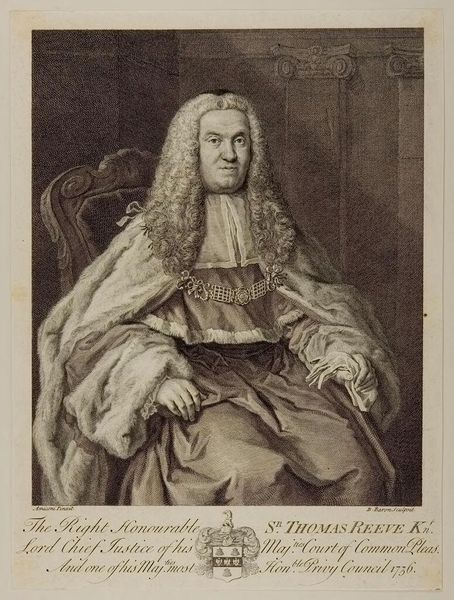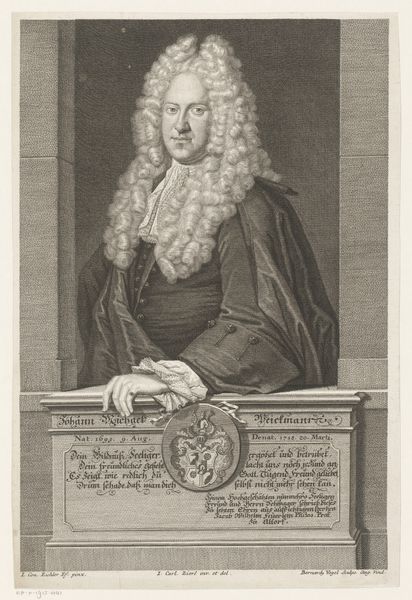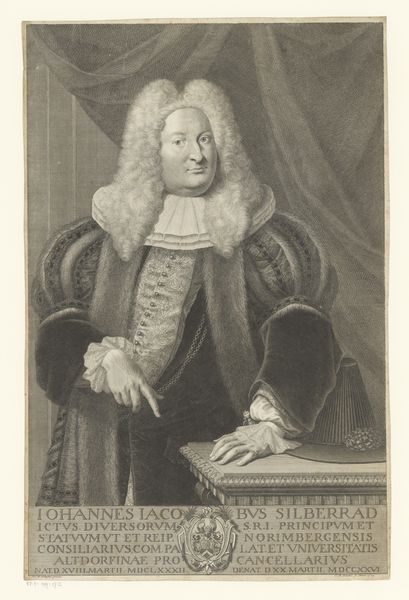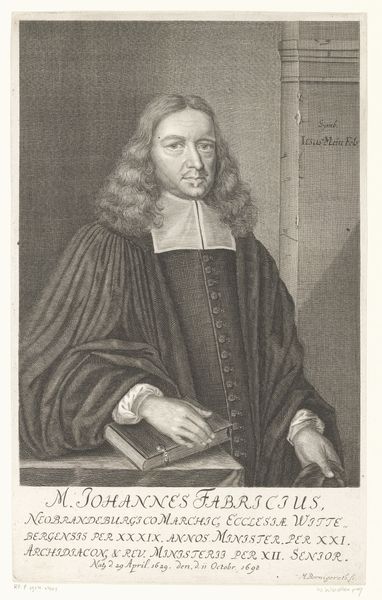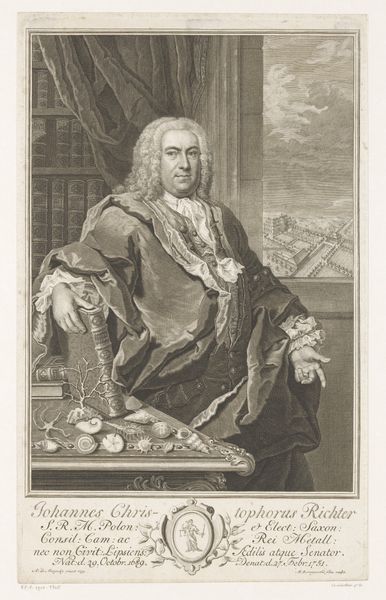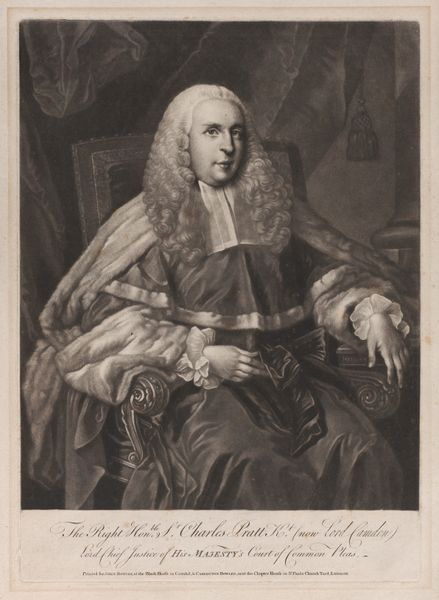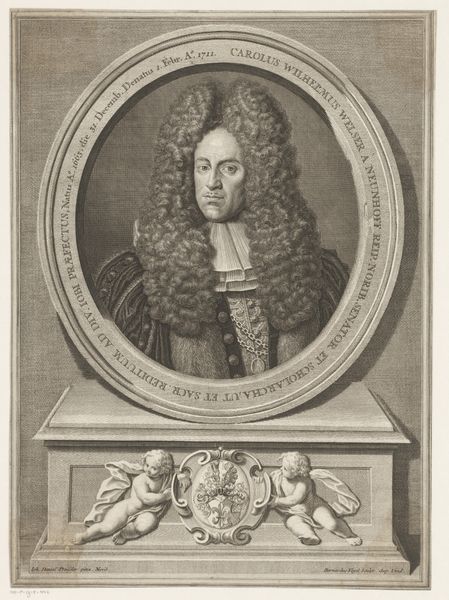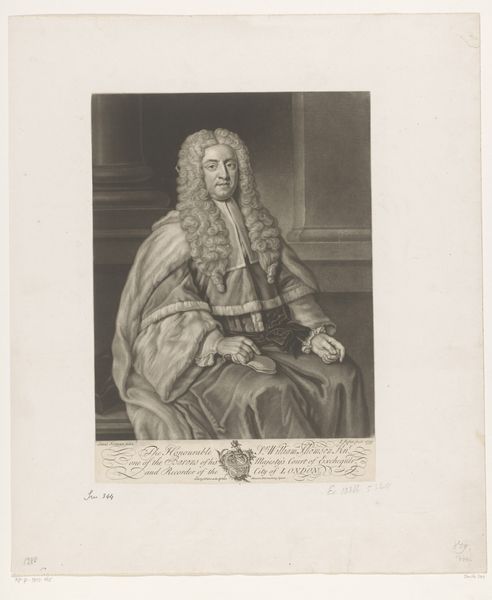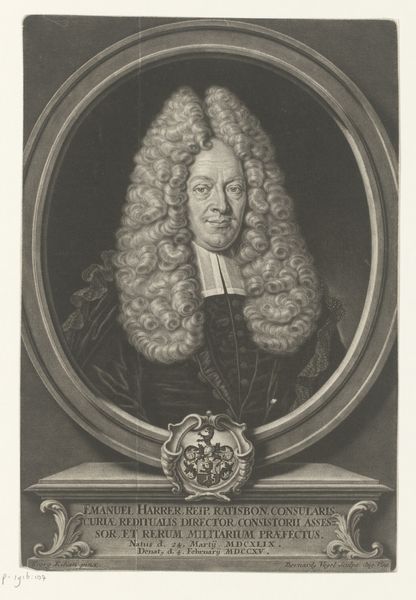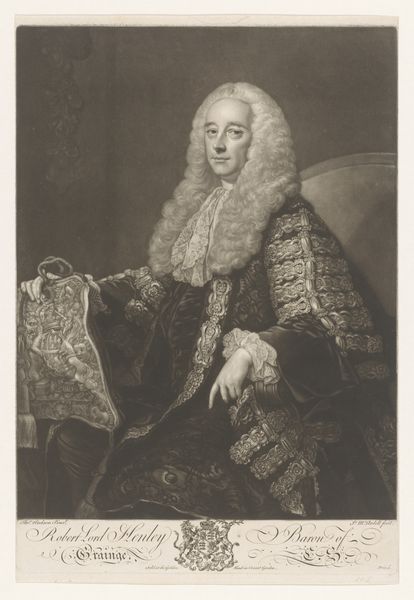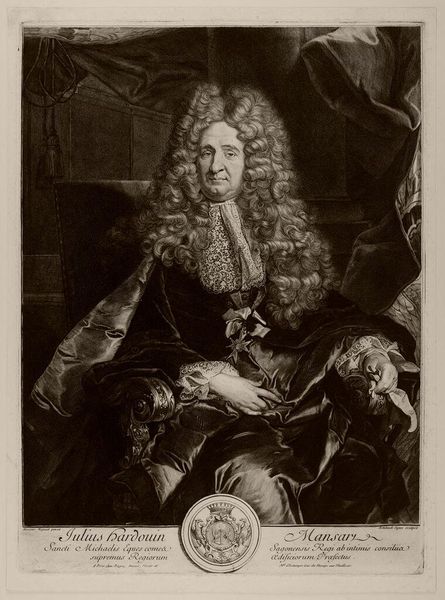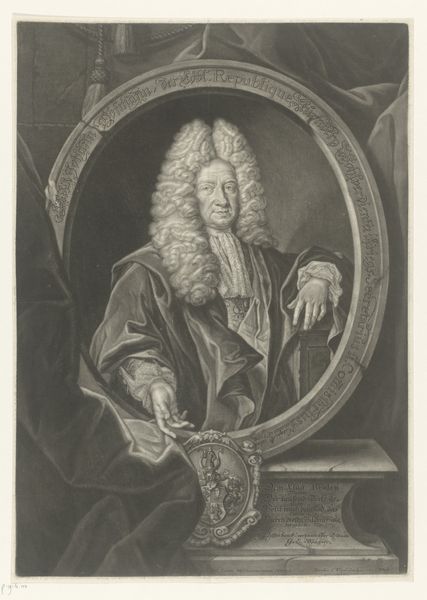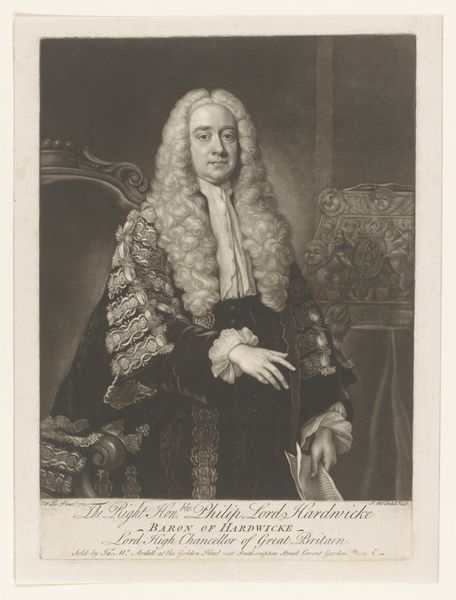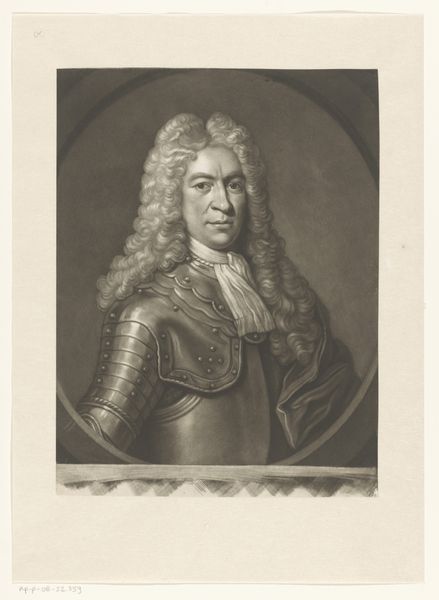
engraving
#
portrait
#
baroque
#
old engraving style
#
portrait reference
#
history-painting
#
engraving
Dimensions: height 364 mm, width 256 mm
Copyright: Rijks Museum: Open Domain
Editor: Here we have Bernard Baron's engraving, "Portret van Thomas Reeve," made sometime between 1736 and 1762. It’s incredibly detailed; you can see every curl in his wig! What catches your eye when you look at it? Curator: The wig, you say? Observe how it almost obscures the man himself. It's not merely a fashion statement; it’s a powerful signifier. In Reeves' time, the wig symbolized authority, status, and belonging to a specific class. Notice the ermine trim of his robes – a continuation of this symbolism. The portrait isn't just of a man; it represents an entire structure of power. Editor: So, it's more than just a picture; it’s a symbol? Curator: Precisely! It’s a performance of power made visual. Think about the visual weight of that wig versus his face. Which holds your gaze longer? The face is individual, but the wig, that uniform of the judiciary, speaks to a lineage and a system far exceeding one person. Editor: That's fascinating! I never thought about clothing and adornment carrying so much… cultural memory. Curator: Visual elements accumulate meaning over time. Reeves is deliberately portrayed with symbols meant to evoke an immediate, visceral response from the viewer. Editor: I guess I always just saw the wig as...old-fashioned! But thinking about it as a visual symbol, I can see how the image communicates status and history at the same time. Curator: Indeed. The symbols whisper stories of the past while dictating the present. It makes you consider how people perceive their place in a given society.
Comments
No comments
Be the first to comment and join the conversation on the ultimate creative platform.
